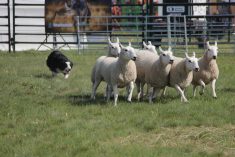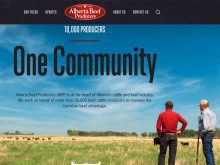Canada’s first code of practice for transporting farm animals is in effect.
The code is a wide-ranging document that provides specific details and recommendations for the care and handling of livestock when they travel off the farm.
The recommendations are based on the most recently understood information on animal behavior and needs.
In some cases, the code refers to federal law that can prosecute violators.
“Judgments do rely on the codes. They are used in courts of law,” said Al Schaefer of Agriculture Canada, who was part of the committee that wrote the code.
Read Also

Dennis Laycraft to be inducted into the Canadian Agricultural Hall of Fame
Dennis Laycraft, a champion for the beef industry, will be inducted into the Canadian Agricultural Hall of Fame this fall.
It consisted of representatives from farm groups, trucking companies, government, welfare groups and animal scientists.
All livestock included
While past livestock codes of practice have included recommendations on animal and poultry movement, this is the first that deals directly with transportation for all domestic species including traditional and alternative livestock.
The code is available to police and anyone involved in moving animals.
Law enforcement officials are included so they understand proper handling of injured animals and their behavior during an accident. Proper euthanasia is explained. Emergency numbers are also available in the case of vehicle accidents.
The code provides definitions of handling techniques and fully describes animal behavior in stressful situations.Transportation starts at the time of loading at the point of origin and continues through sale, reloading and unloading.
Producers, shippers and consignors are all responsible for contracting qualified transporters who are knowledgeable about the care and handling of animals during transport. A course for truckers was recently introduced. The code outlines animals’ requirements for rest, watering and feeding while in transit.
Federal regulations require that animals be fed and watered within five hours of loading if they are going to be in transit for more than 24 hours.
A description of proper vehicles, ramp slopes, chutes, proper flooring and truck cleaning is provided. Loading densities for each species, size and number of animals are included.
The code explains how to handle animals in all types of weather. This includes extreme heat, precipitation, cold and wind chill as well as signs to watch for when animals are stressed because of weather. Handling of sick, injured or stressed animals is explained.
Since animal movement crisscrosses the continent, it is hoped some harmonized rules could be put in place for livestock crossing international borders.
“There are some grey areas there that are not totally harmonized across countries,” Schaefer said.
The complete code is available at www.carc-crac.ca.















